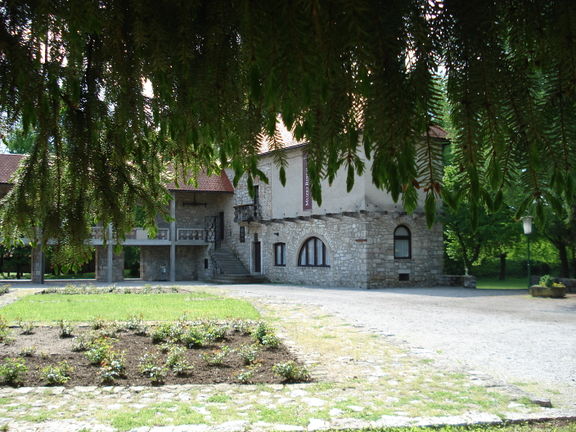Difference between revisions of "Museum of Ribnica"
m |
Ivan Pirnat (talk | contribs) m |
||
| Line 1: | Line 1: | ||
{{Article | {{Article | ||
| − | | status = | + | | status = WRITING INFOBOX TOPROOFREAD NIFERTIK! |
| maintainer = Ivan Pirnat | | maintainer = Ivan Pirnat | ||
}} | }} | ||
{{Infobox | {{Infobox | ||
| name = Mikl House Museum | | name = Mikl House Museum | ||
| − | + | | local name = Miklova hiša - Muzej | |
| − | Miklova | + | | address = Miklova hiša, Škrabčev trg 21, SI-1310 Ribnica, Slovenia |
| − | | | + | | telephone = 386 (0) 1 835 0376 |
| − | | telephone = 386 (0) 1 | ||
| fax = 386 (0) 1 836 1938 | | fax = 386 (0) 1 836 1938 | ||
| email = muzej.mh@amis.net | | email = muzej.mh@amis.net | ||
| website = http://www.miklovahisa.si/muzej/ | | website = http://www.miklovahisa.si/muzej/ | ||
| − | | | + | | opening hours = Mon - Fri, from 8am to 4pm, from Oct to May by appointment |
| + | | founded by = Ribnica Municipiality | ||
| contacts = {{Contact | | contacts = {{Contact | ||
| name = Vesna Horžen | | name = Vesna Horžen | ||
| − | | role = | + | | role = Director |
| telephone = 386 (0) 1 836 1938 | | telephone = 386 (0) 1 836 1938 | ||
}} | }} | ||
Revision as of 22:42, 18 February 2010
The collection of wooden ware and pottery presents the typical cottage industries of the Ribnica region, and includes vessels, spoons, flooring, joinery products, tools, turned articles, wickerwork and toothpicks. An archaeological exhibition on the oldest settlement in the Ribnica Valley depicts a remarkable prehistoric hill fort surrounded by three ramparts. From classical antiquity there is the accidental find of a coin in Velika gora with the head of the Roman Emperor Hadrian. Finally, an exhibition on emigrants from the Ribnica area portrays the period from the mid 19th century to the First World War, when many local people migrated to America.




